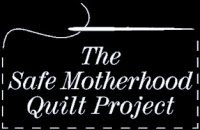An editorial debate in last week's Boston Globe caught my attention. The subject: should midwives be autonomous care providers, licensed and regulated by the state's government (as are physicians), or should they practice subordinately to and under the supervision of physicians?
The the initial editorial in The Boston Globe focused on the rise in cesarean section rates, calling for expansion of midwifery access, including licensure of Certified Professional Midwives, as one of three key measures to reversing the trend (the others being stricter induction protocols and increased access to VBAC--I could not agree more). An excerpt:
Enhancing access to midwifery care might well be the most effective approach to safely reducing the overall caesarean rate — and could lead to significant cost savings and improvement in other priority areas such as breastfeeding. It would also address the impending shortage of obstetric providers. The Legislature should pass a bill to expand access to midwifery care in Massachusetts. We must finally make midwives more central in maternity care — as do all other countries whose birth outcomes are superior to ours.
Its rebuttal argued that the CNM's and CM's currently practicing under physician regulation are serving women adequately, and that CPM's do not have adequate training to be state-regulated:
This bill would license certified professional midwives, formerly called “lay midwives,’’ who don’t even have to have a high school diploma to attain certification. This could also potentially cost the state millions of dollars during difficult economic times. Yes, we all care about the caesareans rate and need to develop strategies to improve access to care by qualified providers in safe settings. However, licensing individuals without adequate training is a dangerous proposal and not the answer to challenges in the health care system.
This argument is predicated on several misconceptions. While CNM's certainly do serve women who seek their care adequately, they most frequently practice in hospitals, where the Midwives Model of Care is desperately needed. CPM's specialize in out-of-hospital births, and although lay midwives also practice(d) outside of hospital walls, Certified Professional Midwives and lay midwives are not, nor were they formerly, the same. To clarify (from the Midwives' Alliance of North America):
Certified Professional Midwife (CPM)
A Certified Professional Midwife is a knowledgeable, skilled and professional independent midwifery practitioner who has met the standards for certification set by the North American Registry of Midwives (NARM) and is qualified to provide the midwifery model of care. The CPM is the only international credential that requires knowledge about and experience in out-of-hospital settings.
Lay Midwife
The term "Lay Midwife" has been used to designate an uncertified or unlicensed midwife who was educated through informal routes such as self-study or apprenticeship rather than through a formal program. This term does not necessarily mean a low level of education, just that the midwife either chose not to become certified or licensed, or there was no certification available for her type of education (as was the fact before the Certified Professional Midwife credential was available). Other similar terms to describe uncertified or unlicensed midwives are traditional midwife, traditional birth attendant, granny midwife and independent midwife.
CPMs follow the practice standards of the National Association of Certified Professional Midwives (NACPM), which include the development of collaborative relationships with other healthcare practitioners who can provide care outside the scope of midwifery practice when necessary. The NACPM standards limit the CPM scope of practice to the primary maternity care of healthy women experiencing normal pregnancies.
In Florida, most Licensed Midwives (LM's) also hold the CPM credential, though it is not recognized by the state. The Midwifery Practice Act is upheld by the Council of Licensed Midwifery, a division of the Department of Health. While Florida licensure requirements include and in many cases exceed those of the CPM, the lack of CPM recognition does pose problems in situations like reciprocal practice (when a midwife is licensed elsewhere and wishes to practice in Florida) and Medicaid reimbursement.
Another point argued on both sides of the Boston Globe debate was the cost to taxpayers vs. cost savings of midwifery licensure. While creating a body of regulation in a state, such as Massachusetts, may initially cost taxpayers, the cost savings generated by licensed midwives is astronomical, and has been projected by many to have the potential to save states millions and our nation billions in healthcare costs. In Washington, the Department of Health mandated a study to investigate this very question, and the answer was resounding. Midwives saved taxpayers there $2.7 million annually, reducing intervention and surgery rates without compromising outcomes. Should a similar study be conducted here, it would reveal (by my own number-crunching) that Florida's midwives save almost four times that amount, with our higher population, percentage of births paid for by Medicaid, and current cesarean rates that are second in the nation.
Increased access to midwifery care, including licensure of Certified Professional Midwives that specialize in low-risk, normal pregnancies and out-of-hospital births, is a win-win-win situation. Taxpayers win, through significant healthcare cost savings. Mothers, babies and families win, through safe outcomes and a motherbaby-centered, non-interventive, evidence-based model of care. And, believe it or not, physicians win. Partnering with out-of-hospital midwives in a true collaborative model ensures that women are paired with the care provider that best suits their risk level and preference, increasing transparency and informed consent, thereby reducing litigation against physicians that stems from lack of information or discontinuity of care.




















No comments:
Post a Comment